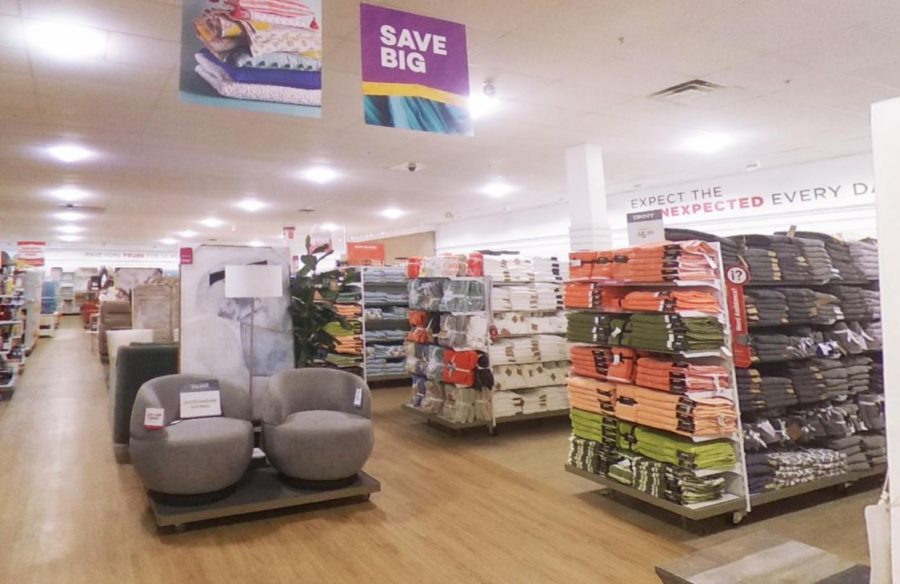
This graphic shows some of the data that online resource Because serves to consumers to help increase add-to-cart rates.
Tampa, Fla. — According to Littledata, home furnishings retailers need help when it comes to consumers adding products to their online shopping carts.
The e-commerce tracking resource surveyed 2,305 stores in March 2022 and found the average add-to-cart (ATC) rate was at 5%. It noted that anything more than 8.3% would be among the best 20% of stores it benchmarks for ATC rate, while more than 10.4% would be in the elite tier, the top 10%. Its survey revealed that the average ATC rate for furniture and homewares was just 3.46% in May 2022.
Because, a two-year-old digital brand, believes it has the potential to help retailers overcome the add-to-cart obstacle. Since it started in the summer of 2020, it has already helped more than 1,000 small to mid-sized e-commerce merchants boost their conversion rates.

Ashland Stansbury
“We help site visitors move through the buying journey on the site to conversion,” Ashland Stansbury, Because’s founder and CEO told Furniture Today. “The way we help is by placing targeted messaging that tells what consumers need throughout the process.”
Stansbury said when a consumer shops Amazon, even if she doesn’t buy the product she clicks on, Amazon serves her information about that product including cost, availability, shipping dates, specifications and more, as well as similar “you might also like” products. Because integrates onto the Shopify platform and serves consumers similar information.
“Amazon’s secret sauce is: If you’re not going to buy that product, they’re going to move you to another product to buy,” Stansbury said. “We’re serving retailers who sell tons of products. In that move-to-cart process, we serve up messaging like Amazon does that’s relevant to that product and that site visitor.
“We’re pairing product data with site visitor data and bringing those together to give the visitor what they need to make a decision on that product or to move onto another product and make a purchase there.”
She said, by giving consumers information, Because helps answer nearly every “no” that might arise. “The top 10 reasons why (consumers) are not purchasing are all related to missing, inaccurate or confusing information,” Stansbury said.
Because integrates with a Shopify site’s back end to automatically update all available product information as vendors add revisions. That’s one less worry for the retailer, which can focus instead on sales.
“From a customer perspective, the software is scalable for a store as they’re growing the catalog, growing sales and growing visitors,” she said. “We’re not an agency; we’re software. They’re using it themselves without code. They don’t need a developer to make updates. The updates come via back-end data. We have access to back-end data through all their SKUs.”
Stansbury said Because is a great fit for home furnishings retailers due to the high volume of available products they offer from a variety of vendors.
“The thing about the furniture industry is (these retailers) typically sell hundreds or thousands of products on their site,” she said. “That’s our sweet spot: the high volume of products that needs to be updated.”
Sam Marlow, director of British home furnishings retailer Lime Lace Interiors, said the company has had great success using Because to power its shoppable site.
“We use Because Intelligence app to create bespoke banners to highlight certain products in our portfolio. Not only for flash discount codes, but also to highlight certain products which have recently been seen in national publications to give our customers confidence in the products we sell,” Marlow said. “We love the simple and easy to use functionality that means we can update or create new banners without the need for developers and be responsive to the ever-developing world of home interiors.”
And as retailers learn more about Because and see how it works, Stansbury says she sees opportunities on additional platforms as well as new ways to tie into most-used retail applications.
“Our goal is to expand to all the other major e-commerce platforms so we serve more retailers. We’re focused on Shopify now because it’s such a big market. I see us expanding to BluCommerce, Magento, Salesforce, etc., allowing us to serve more merchants,” she said.
“We’re expanding from a partner perspective where we will be integrating into apps that merchants are using on a daily basis. If they’re using an inventory platform or shipping platform or email platform, those become additional touchpoints for us to integrate into their stack.”
See also:
Thomas Lester is Retail Editor for Furniture Today and Digital/Managing Editor for Home Accents Today. A graduate of Emory & Henry College's Mass Communications program, Lester spent a dozen years working for newspapers in Virginia and North Carolina covering an array of subjects, ranging from community news, government, education, ACC sports, professional baseball and more before joining Furniture Today in 2013. Reach out to me with your story ideas, tips and more at [email protected].




















